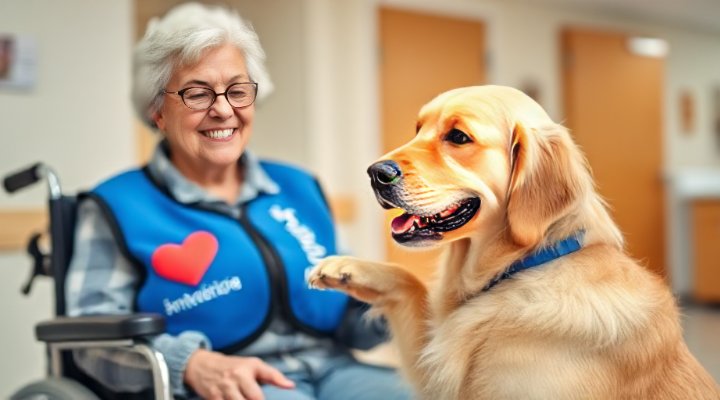Introduction
Have you ever watched your pet comfort someone who’s feeling down and thought, ‘They’d make an amazing therapy animal’? You’re not alone! At Pet Training, we’ve helped countless pet owners navigate the therapy animal certification process to share their furry friends’ healing powers with those in need.

Becoming a certified therapy animal team is about more than just having a friendly pet – it’s a journey that requires proper training, evaluation, and commitment. But the rewards? Absolutely priceless. Let’s walk through everything you need to know.
What Makes a Good Therapy Animal Candidate?
First and foremost, not every pet is cut out for therapy work. The ideal candidate has:
- A calm, predictable temperament
- Solid basic obedience skills
- Comfort with unfamiliar environments
- Gentleness with fragile individuals

From my experience evaluating animals at Pet Training, I’ve found that breed matters less than personality. While golden retrievers are common, I’ve certified everything from Great Danes to Chihuahuas – even the occasional cat or rabbit!
The Certification Process Step-by-Step
1. Basic Obedience Training: Your pet should master commands like sit, stay, come, and leave it. At Pet Training, we recommend our ‘Good Citizen’ course as excellent preparation.
2. Socialization: Expose your pet to various environments, sounds, and people. Remember that time my Labrador first encountered a wheelchair? We spent weeks practicing!

3. Official Evaluation: Organizations like Pet Partners or Therapy Dogs International administer standardized tests assessing temperament and skills.
4. Handler Training: You’ll learn to read both your animal’s signals and clients’ needs – equally important skills!
5. Certification: After passing all requirements, you’ll receive official credentials and can begin visits.
The Rewards and Responsibilities
Therapy animal work brings incredible joy, but it’s not without challenges. You’re committing to:
- Regular health checks and grooming
- Ongoing training reinforcement
- Being attuned to your animal’s stress signals

One of my most memorable moments was watching a therapy cat named Whiskers coax a nonverbal child into speaking for the first time in months. That’s the magic we help create at Pet Training.
Getting Started
Ready to begin your journey? Visit Pet Training for resources, recommended trainers in your area, and our popular ‘Is My Pet Ready?’ assessment tool. Who knows – your furry friend might be someone’s healing hero!
Key Terms: Therapy Animal Certification Process, certified therapy animals, emotional support animal training, pet therapy certification, therapy dog requirements
